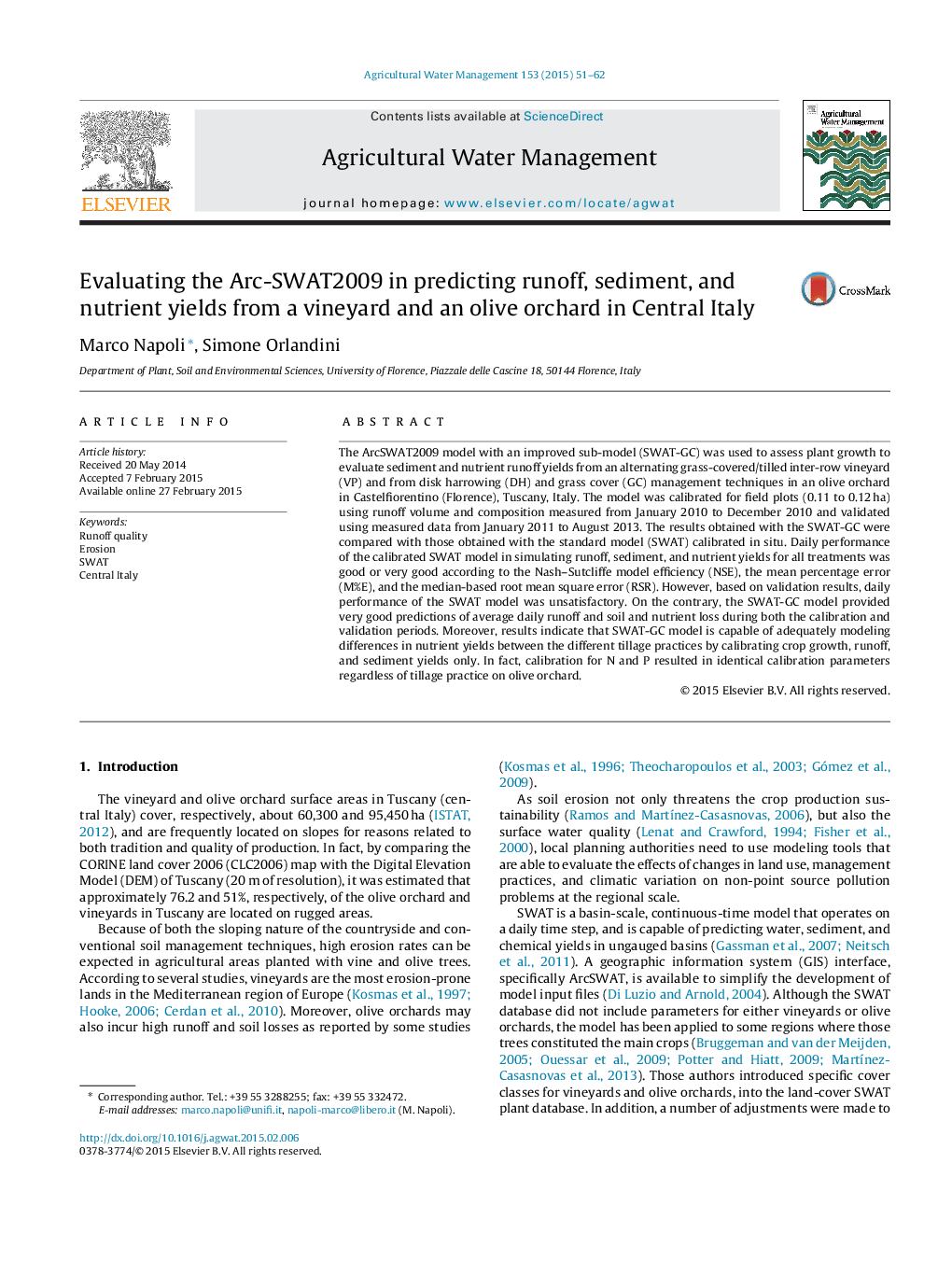| Article ID | Journal | Published Year | Pages | File Type |
|---|---|---|---|---|
| 4478453 | Agricultural Water Management | 2015 | 12 Pages |
•The model was improved for simulating growth of a mixed stand of annual and perennial crops.•A sub-routine for estimating the nutrient removal by perennial crop pruning was added.•The model was validated versus daily runoff from a vineyard and an olive orchard.
The ArcSWAT2009 model with an improved sub-model (SWAT-GC) was used to assess plant growth to evaluate sediment and nutrient runoff yields from an alternating grass-covered/tilled inter-row vineyard (VP) and from disk harrowing (DH) and grass cover (GC) management techniques in an olive orchard in Castelfiorentino (Florence), Tuscany, Italy. The model was calibrated for field plots (0.11 to 0.12 ha) using runoff volume and composition measured from January 2010 to December 2010 and validated using measured data from January 2011 to August 2013. The results obtained with the SWAT-GC were compared with those obtained with the standard model (SWAT) calibrated in situ. Daily performance of the calibrated SWAT model in simulating runoff, sediment, and nutrient yields for all treatments was good or very good according to the Nash–Sutcliffe model efficiency (NSE), the mean percentage error (M%E), and the median-based root mean square error (RSR). However, based on validation results, daily performance of the SWAT model was unsatisfactory. On the contrary, the SWAT-GC model provided very good predictions of average daily runoff and soil and nutrient loss during both the calibration and validation periods. Moreover, results indicate that SWAT-GC model is capable of adequately modeling differences in nutrient yields between the different tillage practices by calibrating crop growth, runoff, and sediment yields only. In fact, calibration for N and P resulted in identical calibration parameters regardless of tillage practice on olive orchard.
